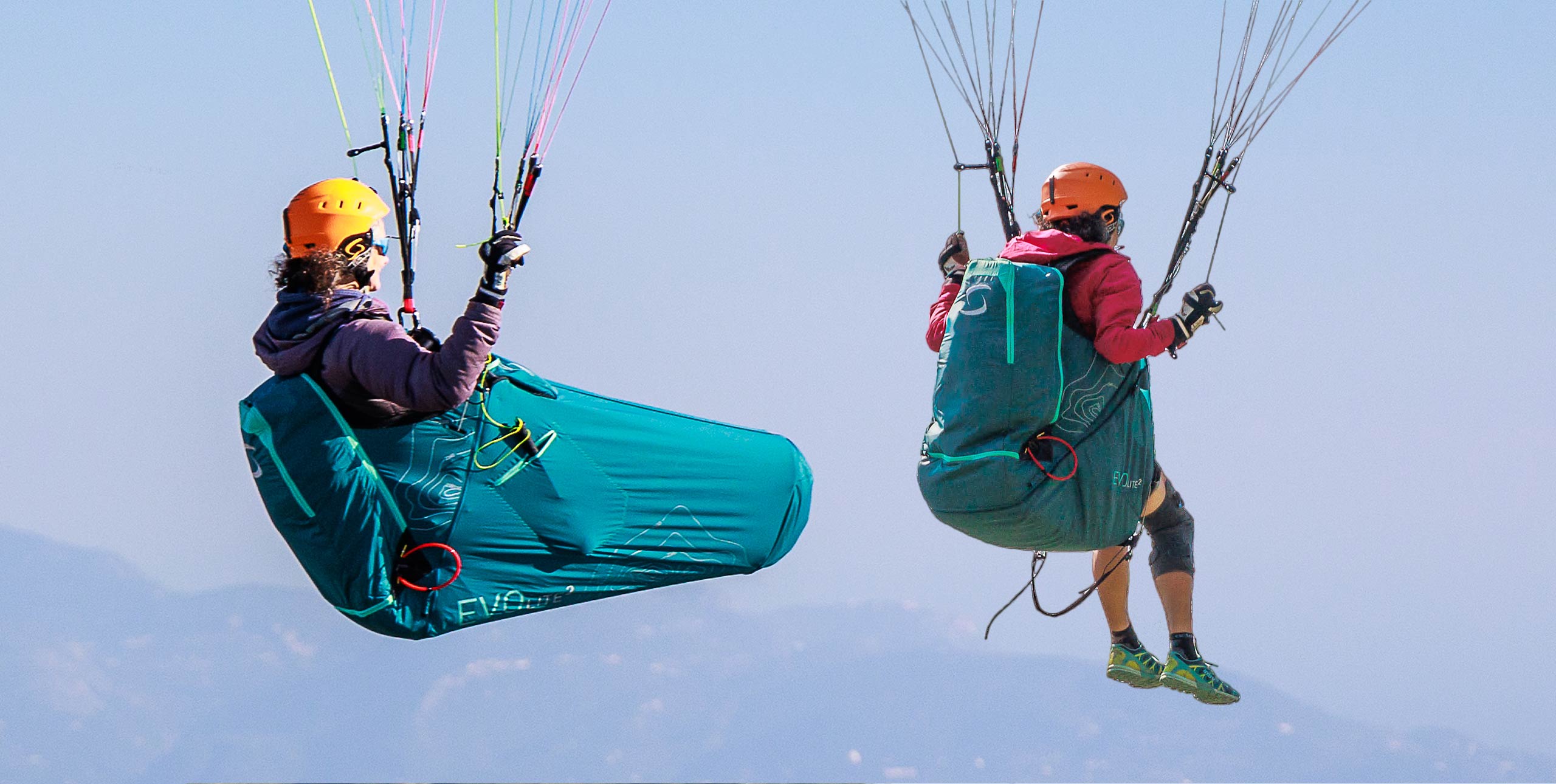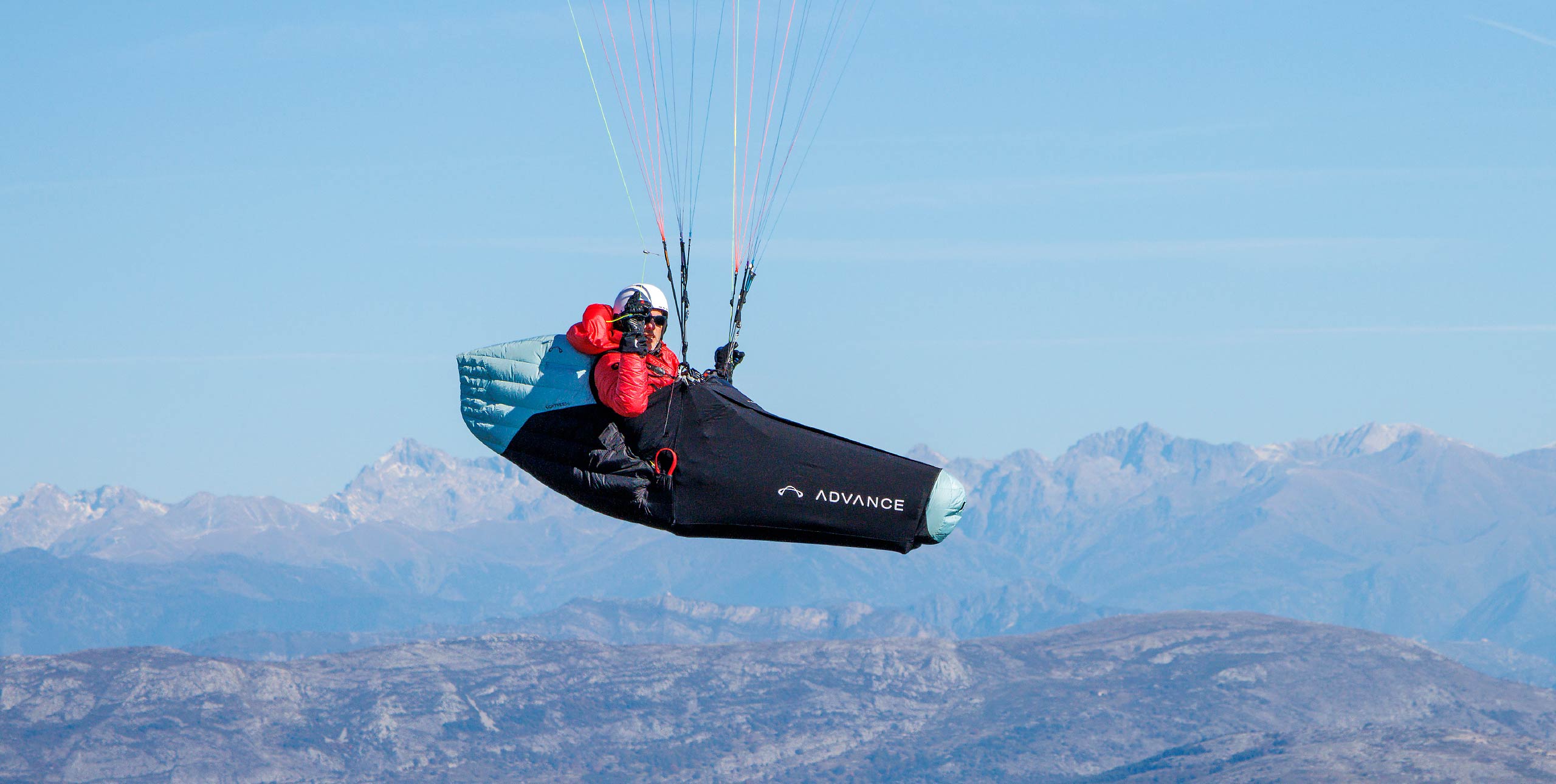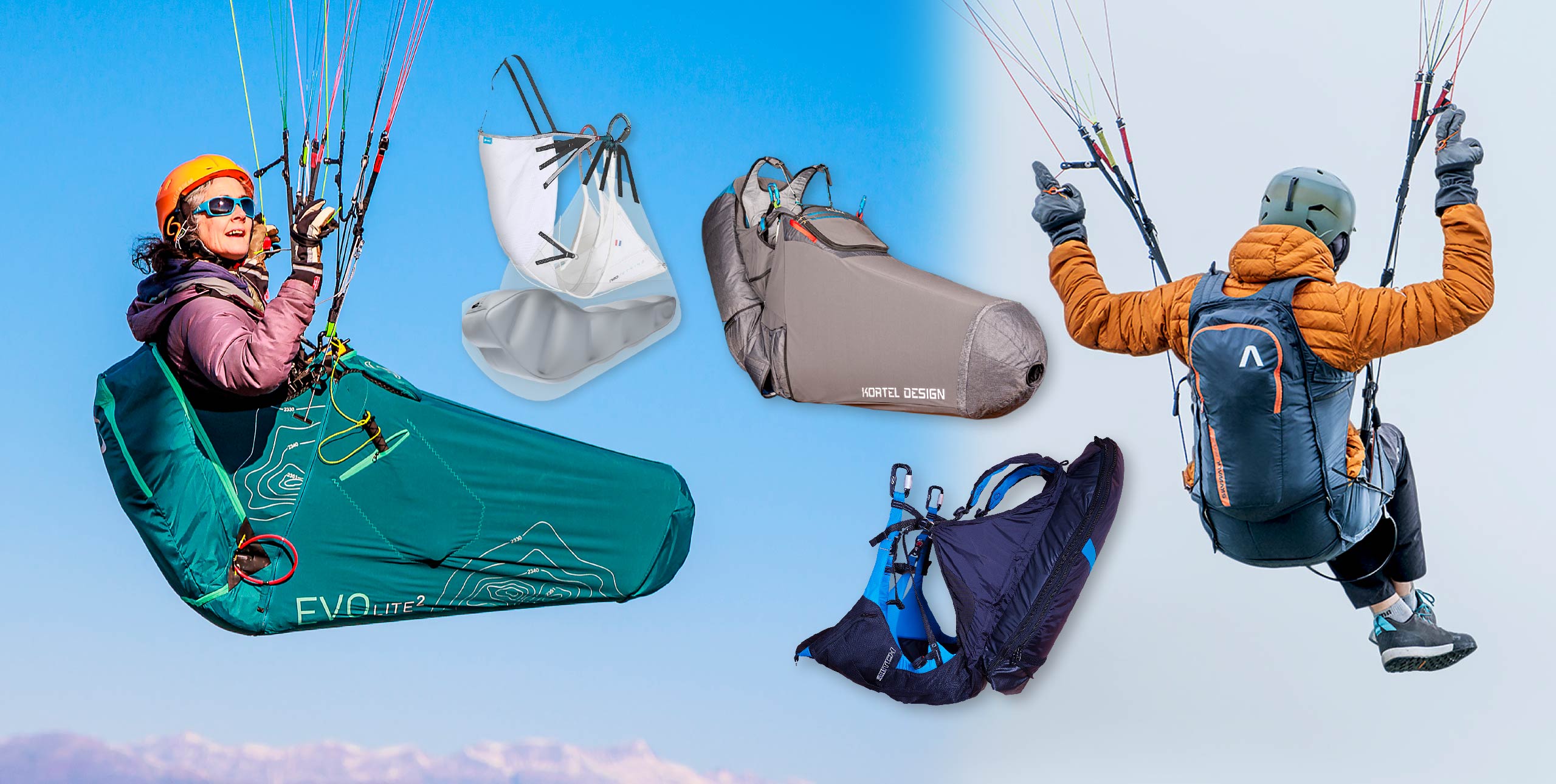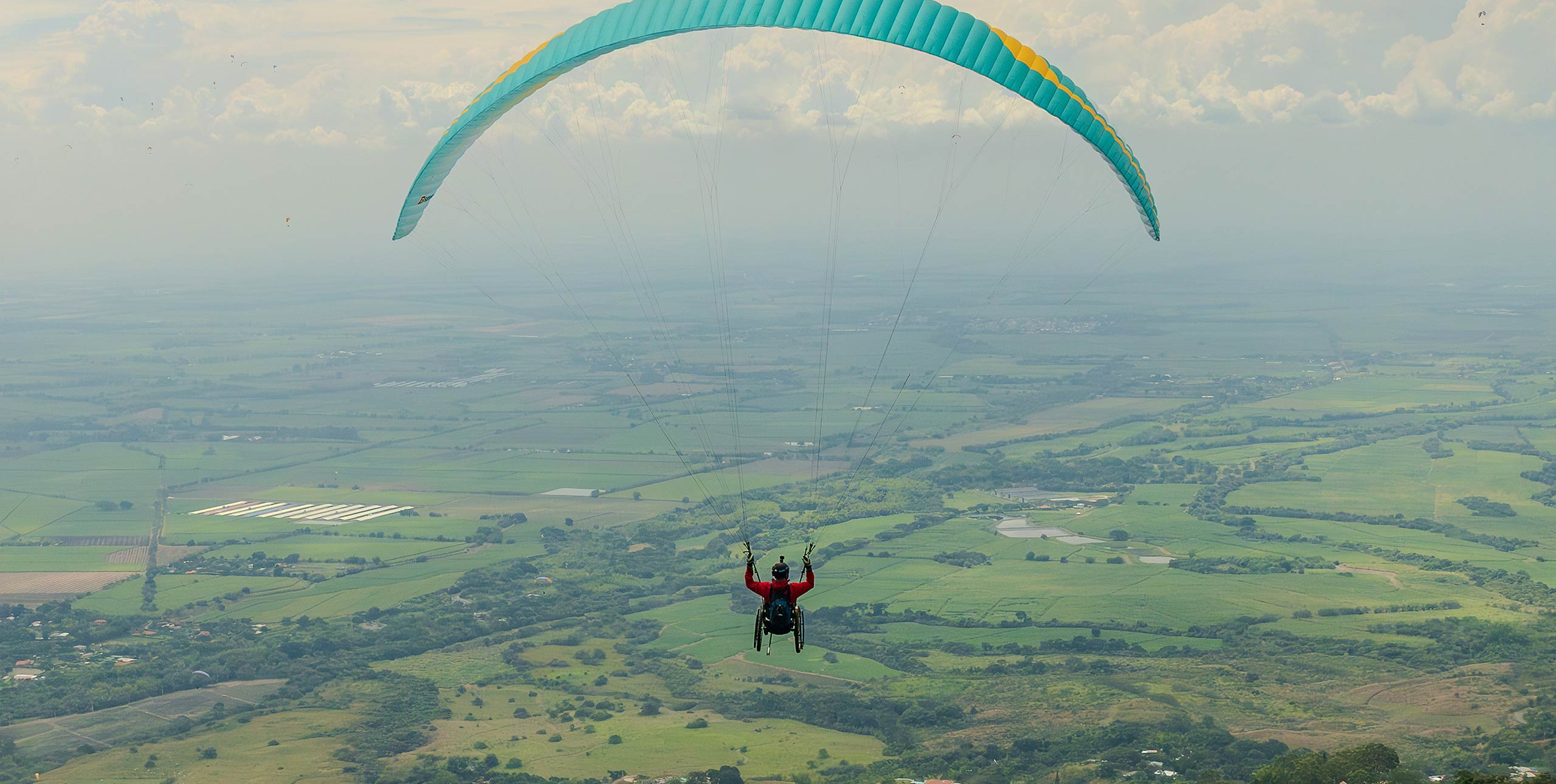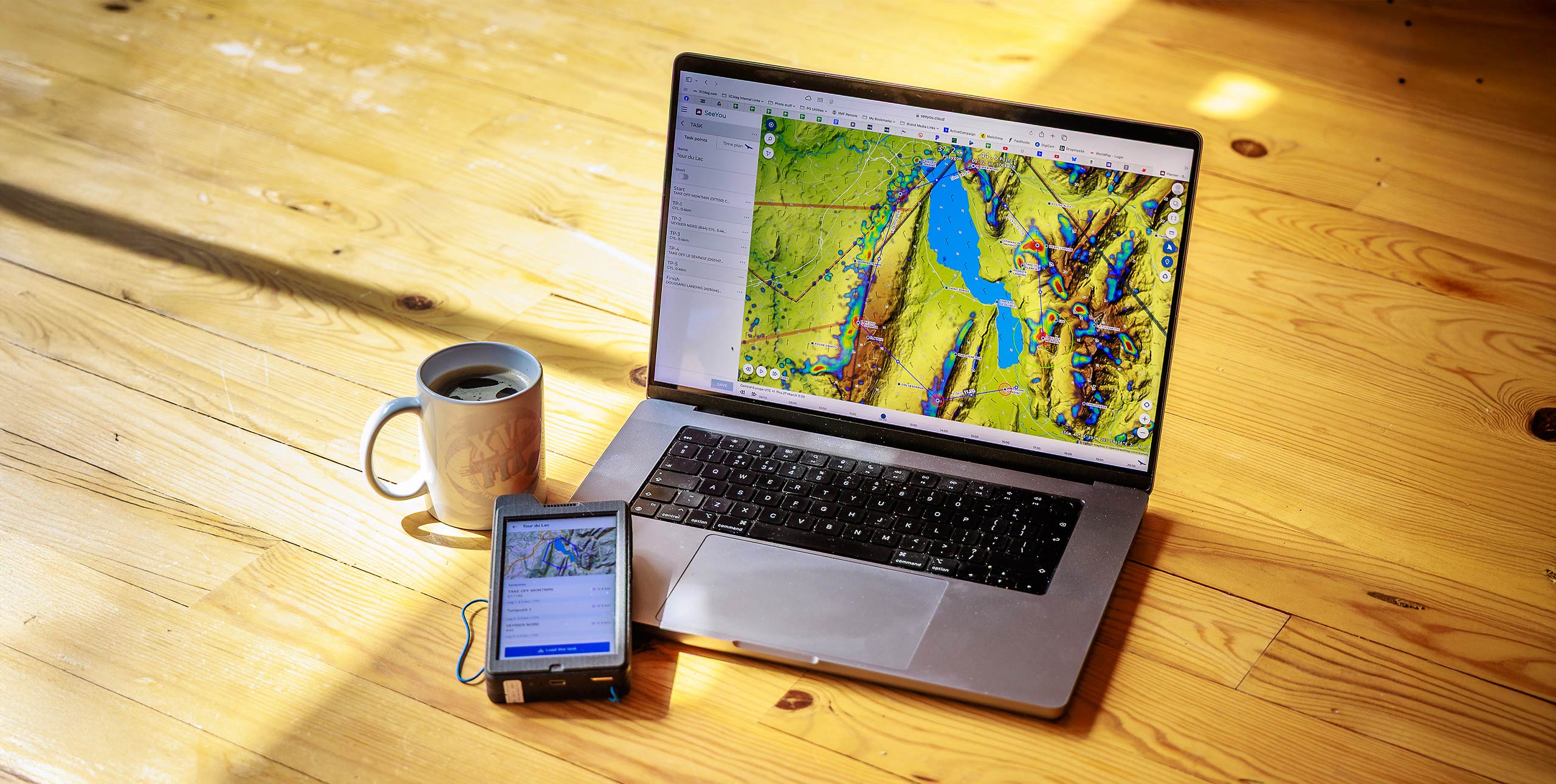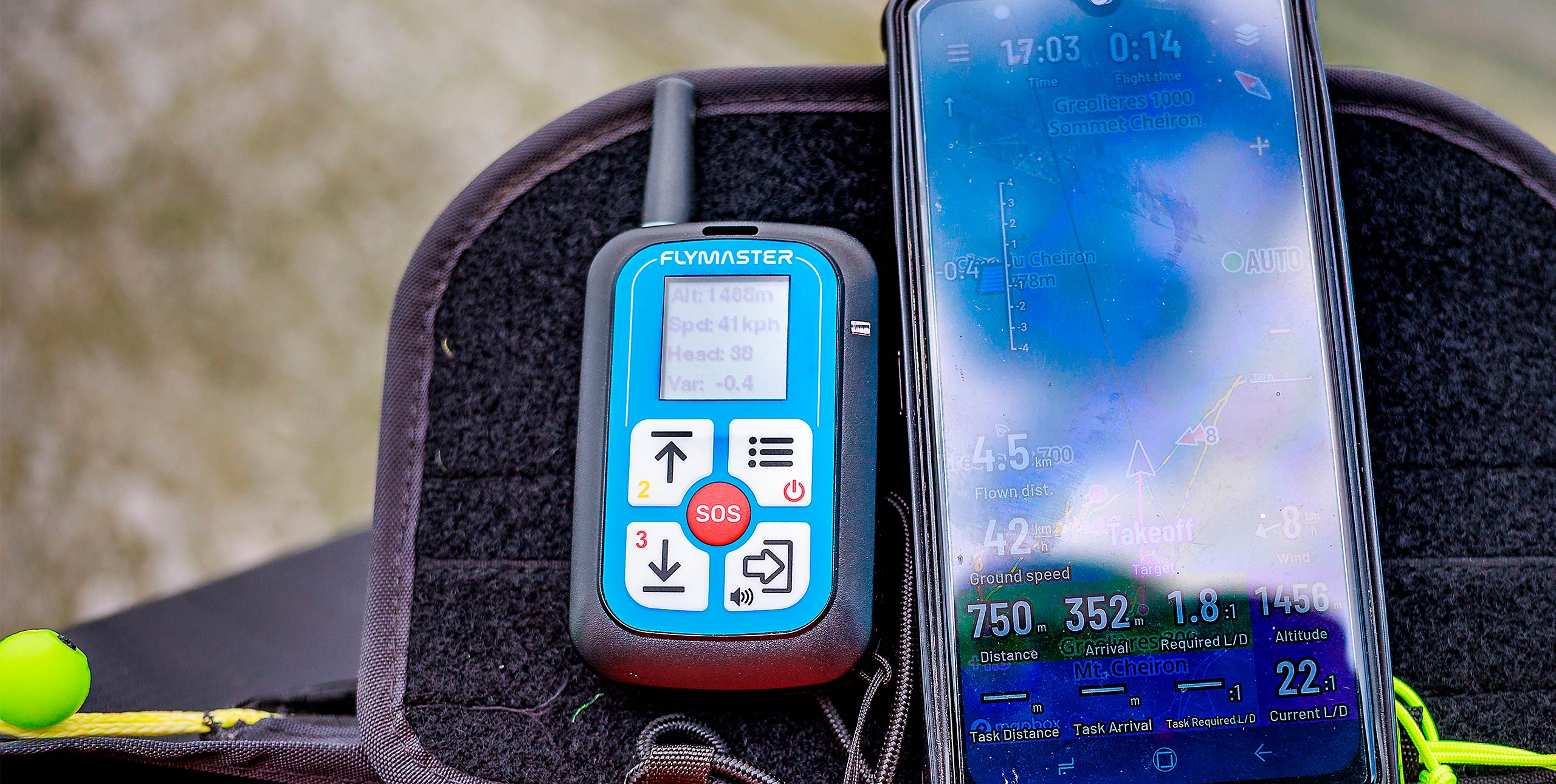
Designed explicitly for vol-biv adventures the new Ozone BV1 is one serious piece of kit. By Marcus King.
Between lockdowns in 2020 I managed to attend a vol-biv course in Chamonix with Antoine Girard and Martin Beaujouan-Berger. During our group conversations it was agreed that the only true vol-biv harness on the market was the Kortel Kolibri, with all the other lightweight pods focussed more on hike-and-fly competitions.
However, Antoine said he’d been working with Ozone harness designer Sam Jobard on something new aimed specifically at the vol-biv market. Roll forward nearly two years and I finally got my hands on the finished product: the BV1.
Although, at the time of the review, some BV1s had been seen in the wild flown by Ozone sponsored pilots, the harness I had was the final production-ready prototype.
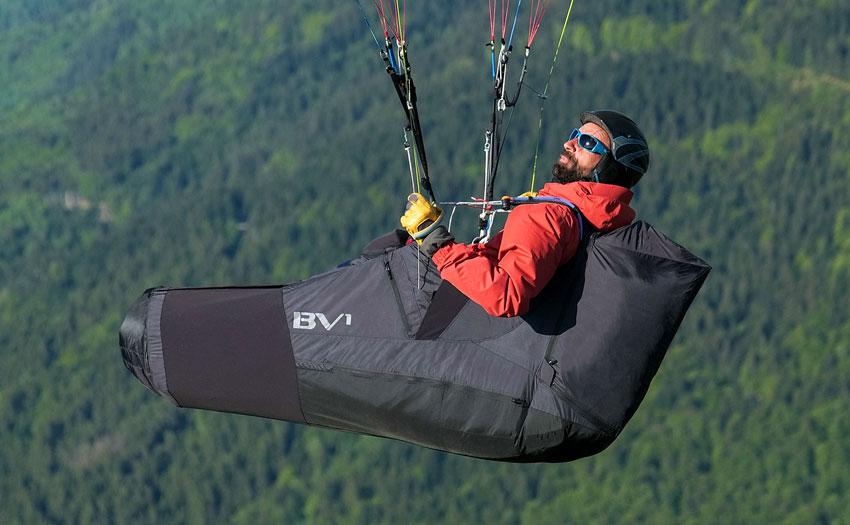
Design and materials
Ozone say this harness is “designed for the toughest vol-biv adventures.” Unpacking, it is obvious they haven’t gone for the lightest materials, like some of the ultralight harnesses which use paraglider-style cloth. Instead, all materials feel like they can deal with a good amount of wear and tear. Despite this, the large size weighs in at only 2.1kg.
The pod is made from a fairly lightweight neoprene-style material – flying in the middle of winter, I did find this seemed to let in a little more cold air than the material on my Woody Valley GTO Light. The rest of the outer skin is made from a tough-feeling ripstop fabric that should stand up to the rough treatment it is likely to get on an adventure.
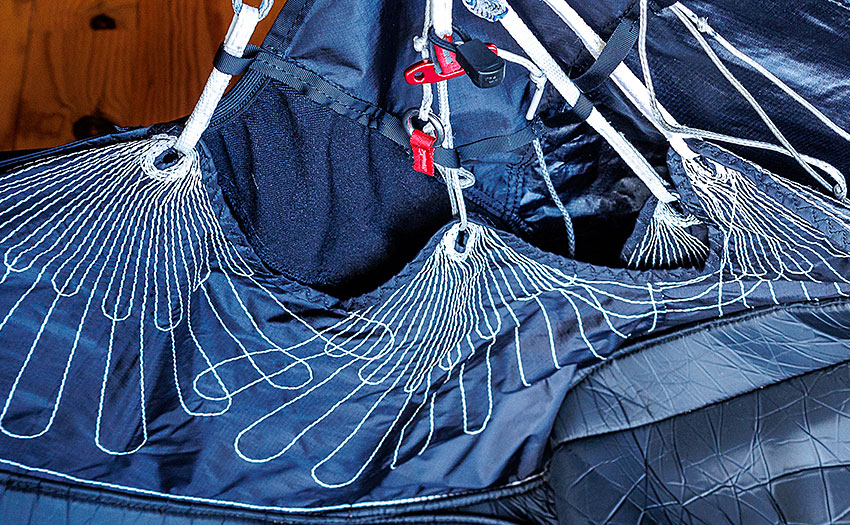
Back protection
Back protection is in the form of an airbag that must be inflated before flight. It runs under the seat and up the first bit of the back, but not very high. The assumption is you will have soft items in the rear storage that will help protect your upper back.
The harness is supplied with a special stuff sack that is used to inflate the protector. You clip the two together and trap air in the stuff sack, rolling it down to push the air into the protector. I did find occasionally the two came undone when inflating; maybe some sort of clipped connector would be better than simply pushing the rubber tube on, but then it would be something that could break. Apart from that it proved very quick to inflate, especially on a hillside with wind.
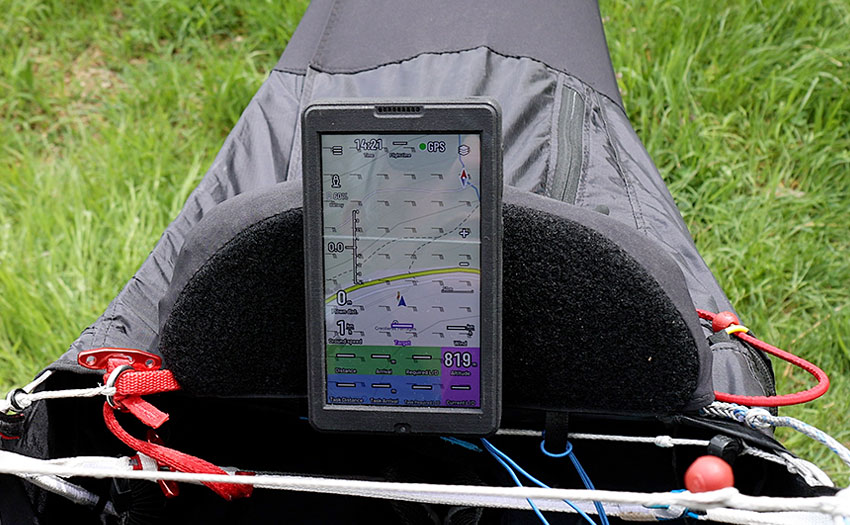
Storage
You will not have any problem packing everything you need. There are two main compartments: a 32-litre back pocket and a 30-litre under-seat storage area; the latter is shared with the inflatable protector.
The rear pocket is easily accessed via two side zips, with a magnetic cover that clips shut to make sure they are not pulled apart. A nitinol wire runs up the back of the pocket to keep its shape in the air. Inside the back storage is a pocket for your drinks bladder with a routing hole to the shoulder where there are elasticated straps and a Velcro patch for a tracker/instrument.
The under-seat storage is easily accessed by a large zip on the side of the harness making it easy to place items inside. Once stored you can inflate the protector to keep them in place.
There are also several smaller but still generously-sized pockets: a zipped one on the side; a zipped one in the pod; and one that closes with Velcro on the inside of the pod below the reserve, perfect for a power bank. Talking of power there are even loops on the pod for attaching a solar panel.
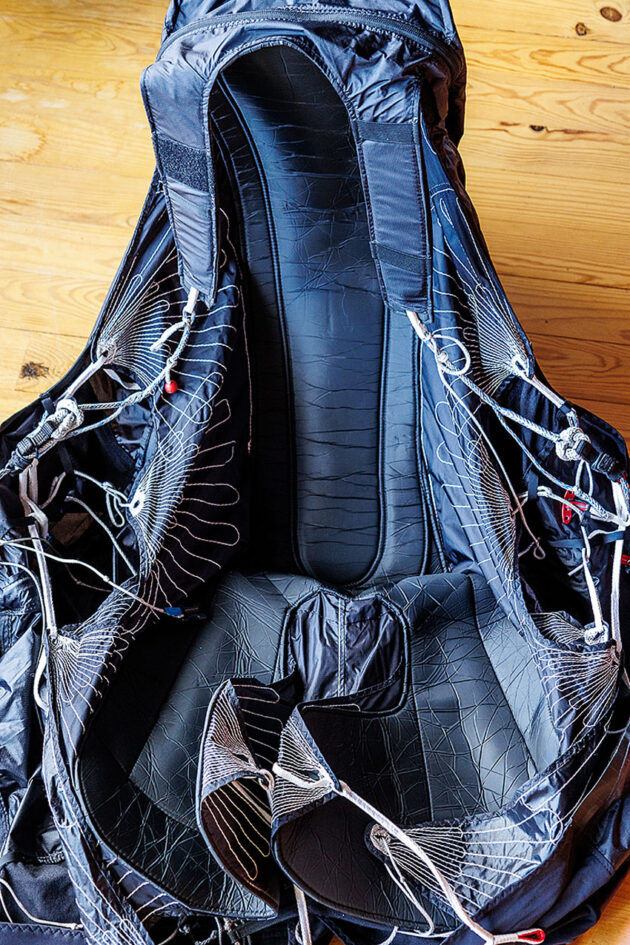
The seat
The harness itself uses Dyneema ropes and sections of cloth with sewn-in Dyneema threads like the F*Race and first seen in the F*Lite. This means the load is better spread than in a harness that use thicker ropes.
The back rest and seat area are well padded, with nitinol rods running up the back to help spread the load further. The seat uses a split-leg design like the Kortel Kolibri. Also like the Kortel, the various harness adjustments are made by sliding the lines that are spliced back through themselves.
Ozone have done this particularly well and I found it was possible to fine-tune all the harness settings, except for the pod length, in the air. This really helped getting it dialled into my body shape, giving great in-flight comfort.
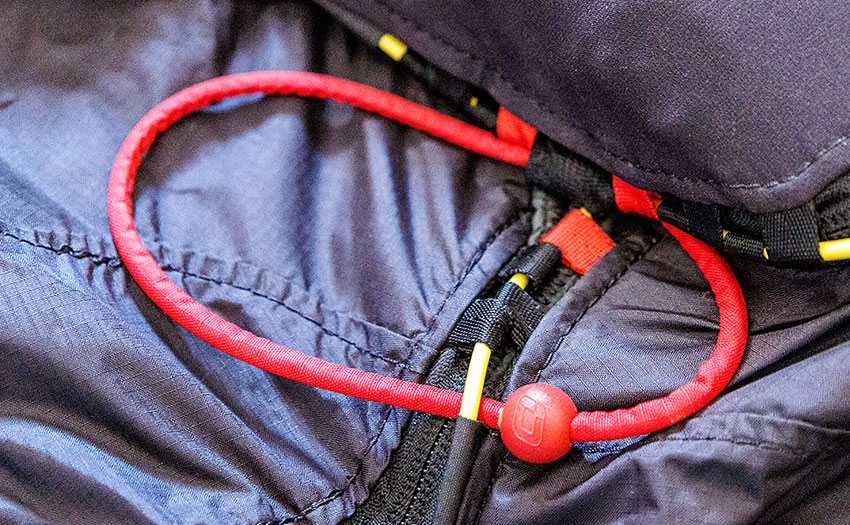 The reserve
The reserve
The reserve is front-mounted but has bridles running to the shoulders, which is a big plus; the downside is you can only throw with your right hand. I found the pouch itself quite a tight fit for my square reserve, but I am sure most pilots would use a specialist light reserve. On top of the reserve is a Velcro-covered panel that is big enough for a tablet and vario.
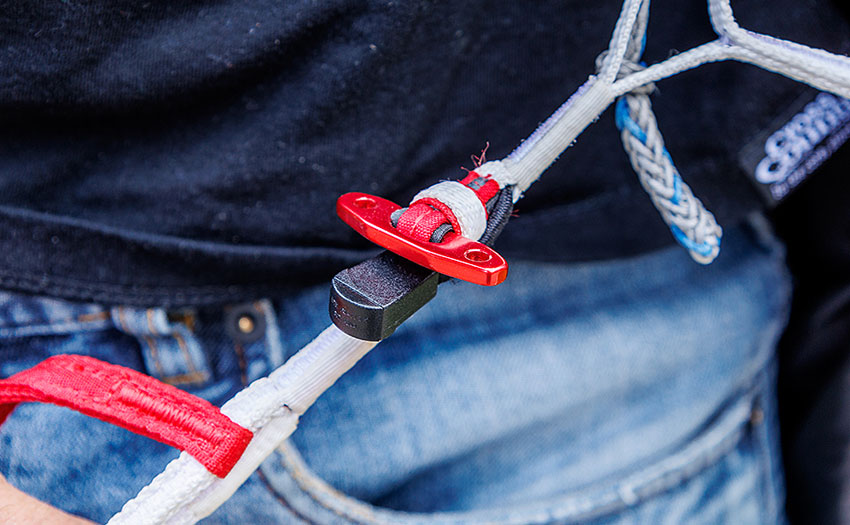
Clipping in
Clipping in is easy, there is no need to step in as both leg loops open. They are sewn to the chest strap and have colour-coded loops at each end. These are fastened by looping them around a metal bar on each side, and secured in place with an elastic loop. A plastic clip closes one side of the pod while a strap and another metal bar are used to fasten the other, which also acts as a safety T-bar.
A minimalist high chest strap closes with another T-bar through a loop. The wing is attached with softlinks that are built into the frame of the harness, you can’t use karabiners. Although fiddlier than karabiners they are easy enough to use, and many pilots will leave their wing attached permanently.
Designer Sam Jobard told me another advantage is that the shoulder straps can be attached at the top of the softlinks giving better support of the shoulders, especially useful when you have a heavier load in the back.
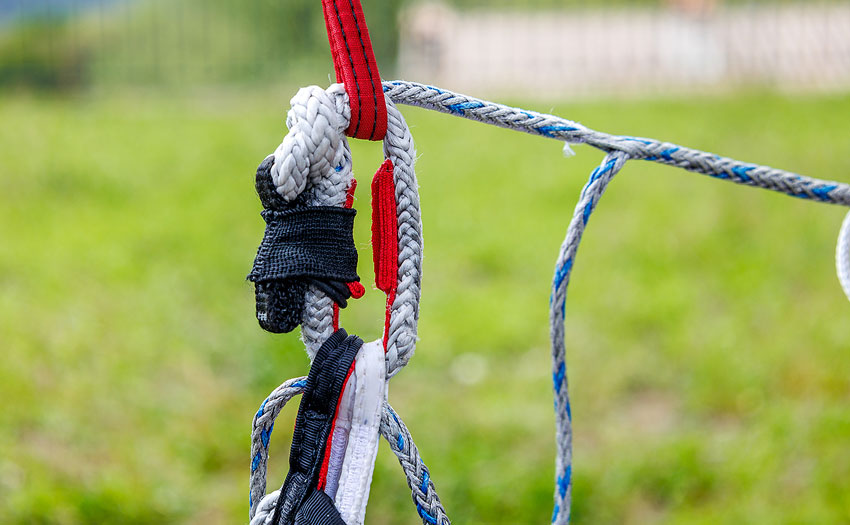
In flight
Getting into the harness once in the air is very natural and the pod closes nicely thanks to the magnet. As I mentioned, it is easy to get the harness fine-tuned in the air, including the lumbar support. I found it provided good, even support across my back with no pressure points.
My longest flight with the harness was about four hours and it felt really comfortable throughout. It is quite snug at the end of the seat, so if you have muscular thighs you may want to check this out.
I had just been flying the Kolibri before this and in use it feels very familiar. It feels quite dampened so you won’t be constantly jiggled about in rough air. It has that nice flowing feel you get from a hammock harness. Some may miss the extra authority a seatboard provides but I had no issues flying it with my lightweight EN C and a lightweight EN B. The split legs mean you can also be a bit more subtle with your movements, although I was happy rolling my hips as I do in my normal pod.
Once landed the harness folds down to a very compact package thanks to the inflatable protection so you can fit it into a smaller pack and still have room for the rest of your kit.
The verdict
With the input of a vol-biv expert like Antoine Girard it is no surprise that Ozone have created a real competitor to the revered Kolibri. In the air both feel similar, and both will easily take your kit for an extended vol-biv adventure. It’s the details that will probably make your decision for you, and of course how the harness fits your particular body size and shape.
Despite having to inflate the protection and the softlinks, I found the BV1 a little easier to live with for daily use, not having to step in, and slightly easier clip-in method.
All in all it’s a well thought-through product that I would be happy to take on my adventures. With its small pack size and easy-to-use-features I also found myself grabbing it for my everyday flying, and that says it all.
Manufacturer’s specifications
Ozone say: “Designed for the toughest vol-bivouac adventures. Our R&D team focused on a balance of durability, comfort, and lightness”
Pilot level: Vol-biv pilots and everyday use
Sizes: S, MS, ML, L
Pilot height (cm): 155-170, 170-180, 175-185, 185-195
Weight (kg): 1.8, 1.9, 2.0, 2.1
Certification: EN/LTF
Published in issue 231 (July 2022)


